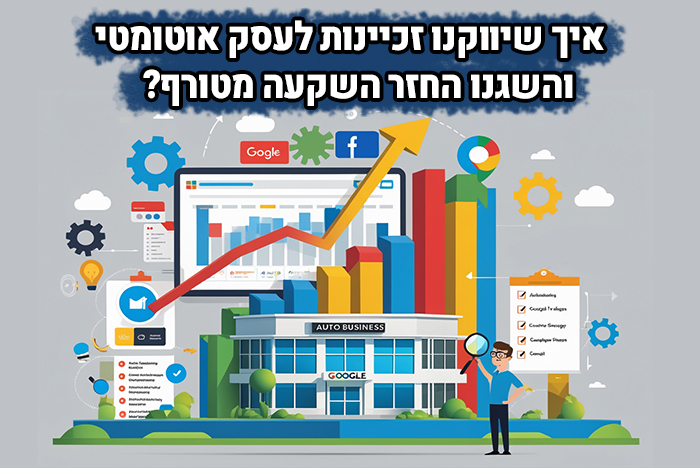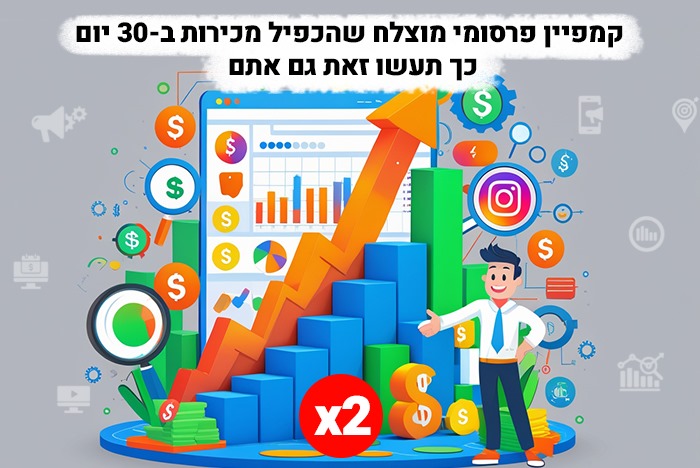
DIGITWOW
1
בניית אסטרטגיה
בהתאמה אישית
2
הגדרת התקציב
הכי מדויק
3
מחקר מעמיק
של קהלי היעד
4
חשיבה מחוץ לקופסא
בשילוב יצירתיות
5
והתוצאה
החזר השקעה של פי 5 ומעלה!
חייב להגיע לקהל המדויק ולהגדיל רווחים?
אנחנו ב – Digitwow סוכנות שיווק דיגיטלי נבנה לך אסטרטגיית שיווק ייעודית, על מנת להבין באיזה אפיק פרסום קהל היעד שלך אקטיבי. יחד נבנה תוכנית בהתאם לתקציב ולאופי המוצר\ השירות ונייצר באזז בערוצי המדיה הרלוונטיים.
רק על ידי תכנון מקיף נוכל להגדיל את החשיפה, להביא כמות לידים גדולה ואיכותית ולהפוך את רשת האינטרנט למכונה משומנת שמייצרת בעבורך כסף על בסיס יומי!
המטרה שלנו? קודם כל תוצאות...
1
בניית אסטרטגיה
בהתאמה אישית
2
הגדרת התקציב
הכי מדויק
3
מחקר מעמיק
של קהלי היעד
4
חשיבה מחוץ לקופסא
בשילוב יצירתיות
5
והתוצאה
החזר השקעה של פי 5 ומעלה!
שירותי שיווק דיגיטלי

לימודי שיווק דיגיטלי לנוודים דיגיטליים
מבין לקוחותינו
מה אומרים עלינו











יש לך שאלות? יש לנו תשובות!
באמצעות שיווק דיגיטלי ניתן להגדיל בצורה משמעותית את המודעות, החשיפה, המכירות והמחזור העסקי של העסק. השיווק הדיגיטלי מתבצע במגוון פלטפורמות בהתאמה אישית לקהלי היעד של העסק.
- תחילה נבצע תיאום ציפיות ונגדיר את המטרות והיעדים העסקיים.
- נבנה אסטרטגיית שיווק בהתאמה אישית, כולל היכרות עם קהלי היעד של העסק, הגדרת התקציב ובחירת הפלטפורמות הרלוונטיות.
- יוצאים לדרך עם הקמפיינים שנבחרו, מבצעים מעקב אחרי התוצאות ועוקבים תמיד את ה- ROI (יחס החזר השקעה).
כפי שאתם יודעים, לכל מוצר/שירות יש קהל יעד מסוים, ולכן עלינו לפנות אליו בשפה שלו וכמובן באפיק הפרסום שבו הוא אקטיבי. כיום מוצעים לנו מגוון אפיקי פרסום, אך לא כל אפיק מתאים לכל מוצר/שירות, ולכן תוכנית שיווקית נועדה בין היתר לבחון היכן קהל היעד שלכם נמצא ולפנות אליו בדרך אסטרטגית. המטרה לשנו לייצר על כל 1 שקל השקעה בפרסום 5 שקלים ויותר, ולייצר החזר השקעה וודאי.
את התוכנית אנחנו בונים בהתאם למטרות השיווקיות של העסק. ממנפים ומבדלים אותו מהמתחרים, ומתאימים את אפיקי הפרסום לפי סוג העסק וקהלי היעד. בין לבין, אנחנו בונים משפכי שיווק, מחלקים בצורה חכמה את התקציב בין הפלטפורמות, תוך שמירה על ערכי המותג והעסק.
אנחנו מקדמים עסקים ששואפים גבוה ורוצים ללכת איתנו לדרך ארוכה יחד ולנפץ את גבולות המדיה. אנחנו פונים לכל סוגי העסקים עם תקציב פרסום של 5K ומעלה.
אנחנו מציעים לעסקים קטנים קורס שיווק דיגיטלי בליווי אישי, המאפשר לקבל כלים פרקטיים לניהול עצמאי של מערך הפרסום ולייצר קמפיינים בגוגל וברשתות חברתיות. מאות בעלי עסקים קטנים הגדילו את המכירות בעזרת הקורס, ואף רבים חזרו אלינו לאחר שגדלו על מנת שננהל להם את מערך השיווק.
אנחנו מתאימים לכל עסק את הפלטפורמות שהכי מתאימות לקהל היעד, וזאת לאחר הנתונים שאספנו וניתוח קהלי היעד. עם זאת, אנחנו משווקים בפלטפורמות: פייסבוק, גוגל, אינסטגרם, לינקדאין, טאבולה, אאוטבריין, יוטיוב ועוד.


















